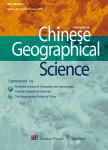Geography of Talent in China During 2000-2015:An Eigenvector Spatial Filtering Negative Binomial Approach
Geography of Talent in China During 2000–2015: An Eigenvector Spatial Filtering Negative Binomial Approach作者机构:School of GovernmentPeking UniversityBeijing 100871China Geographic Data Science LabDepartment of Geography and PlanningUniversity of LiverpoolLiverpool L69United Kingdom School of Geography and PlanningSun Yat-sen UniversityGuangzhou 510275China Guangdong Key Laboratory for Urbanization and Geo-SimulationSun Yat-sen UniversityGuangzhou 510275China
出 版 物:《Chinese Geographical Science》 (中国地理科学(英文版))
年 卷 期:2021年第31卷第2期
页 面:297-312页
核心收录:
学科分类:120202[管理学-企业管理(含:财务管理、市场营销、人力资源管理)] 12[管理学] 0202[经济学-应用经济学] 1204[管理学-公共管理] 02[经济学] 1202[管理学-工商管理]
基 金:Under the auspices of the National Social Science Foundation of China(No.17ZDA055)
主 题:talent distribution determinants eigenvector spatial filtering panel data analysis China
摘 要:The increase in China’s skilled labor force has drawn much attention from policymakers,national and international firms and *** how educated talent locates and re-locates across the country can guide future policy discussions of equality,firm localization and service *** studies have tended to adopt a static cross-national approach providing valuable insights into the relative importance of economic and amenity differentials driving the distribution of talent in ***,few adopt longitudinal analysis to examine the temporal dynamics in the stregnth of existing *** released official statistical data now enables space-time analysis of the geographic distribution of talent and its determinants in *** four-year city-level data from national population censuses and 1%population sample surveys conducted every five years between 2000 and 2015,we examine the spatial patterns of talent across Chinese cities and their underpinning drivers evolve over *** reveal that the spatial distribution of talent in China is persistently unequal and spatially concentrated between 2000 and *** also shows gradually strengthened and significantly positive spatial autocorrelation in the distribution of *** eigenvector spatial filtering negative binomial panel is employed to model the spatial determinants of talent *** indicate the influences of both economic opportunities and urban amenities,particularly urban public services and greening rate,on the distribution of *** results highlight that urban economic-and amenity-related factors have simultaneously driven China’s talent’s settlement patterns over the first fifteen years of the 21st century.



